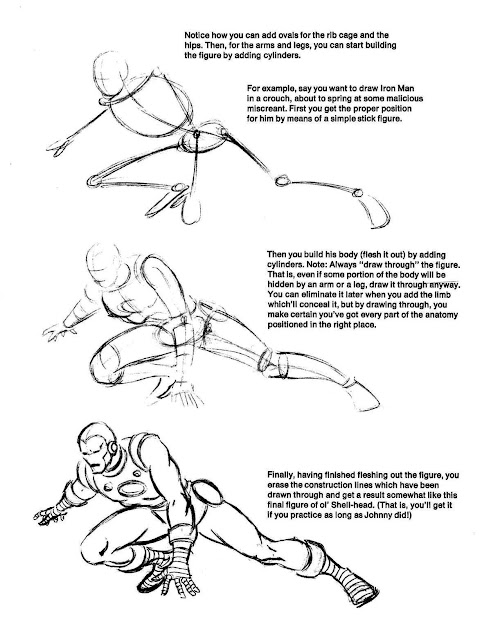The examples of gesture from this post include aspects of the stick figure/mannikin. They're actually inseparable elements.
Here are some sources from which I learned the stick figure/mannikin:
1. How to Draw Comics the Marvel Way—Stan Lee & John Buscema:

2. Figure Drawing for All It's Worth—Andrew Loomis:
3. Famous Artists Course:
4. Peter Cox (painter and Arts Students League instructor):
I took Cox's artistic anatomy/figure drawing class in the '90s and learned a lot. One of his methods that I especially liked involved getting the figure down quickly by concentrating on drawing its "major masses." There are only three parts of the skeleton that are solid and inflexible—the skull, the ribcage and the pelvis. Cox taught us to get those three parts down first during the short poses section of the class. The remainder of the skeleton flows from those three parts. I still use this method today when doing gesture drawings. The red lines in the gesture drawing below show where I placed the lines of action (I always start a figure drawing with a line of action) and the major masses before building volumes and clothing on top:























